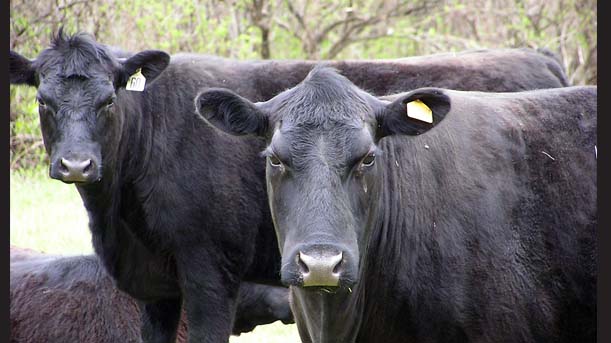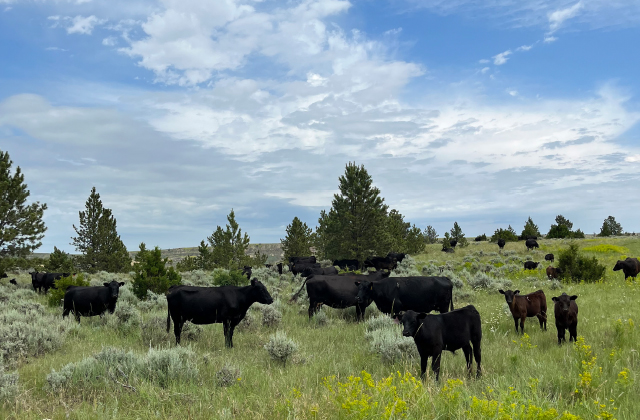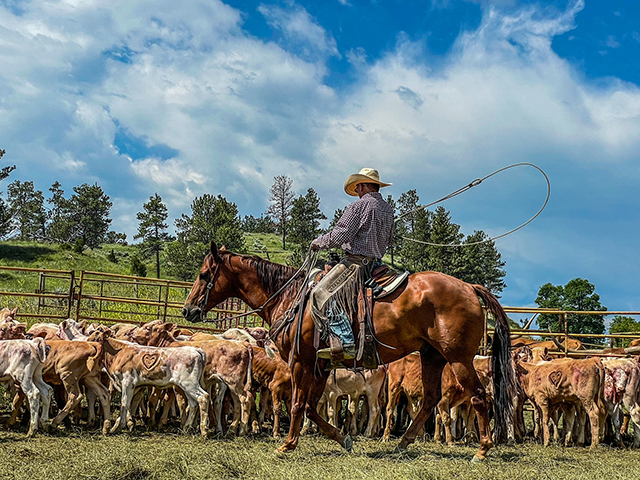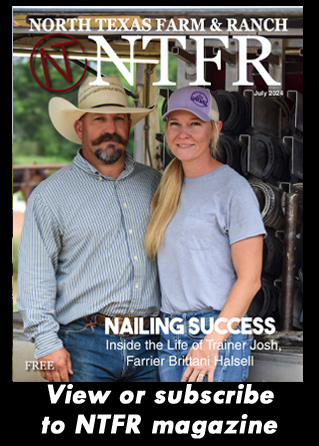Farm & Ranch
AgriLife Extension: Genomic-enhanced data has a place in building back cattle herds

By: Kay Ledbetter
Writer: Kay Ledbetter, 806-677-5608, [email protected]
Contact: Dr. Joe Paschal, 361-265-9203, [email protected]
AMARILLO – Genetic markers are beginning to give cattlemen a more accurate glimpse into their breeding animals’ expected progeny differences or EPDs when selecting for traits to build into their herds.
As the industry begins to rebuild its herds following years of drought, genomic-enhanced EPDs can help cattlemen make more informed decisions, whether they have purebred or crossbred herds, said Dr. Joe Paschal, Texas A&M AgriLife Extension Service livestock specialist at Corpus Christi.
Speaking at the recent Southwest Beef Symposium in Amarillo, Paschal said the Angus and Santa Gertrudis breed associations are already using this tool and he expects others to soon adopt the technology.
Paschal said two things are important when building a crossbreeding program – breed selection and hybrid vigor.
“You need to make selections that fit the market conditions and the environmental conditions you have, because you have to live with those breeds,” he said. “Make sure the right breeds are used for the right reasons.”
Typically, a breeding animal is chosen based on its EPD for a given trait, such as weaning weight. For instance, one bull may have an EPD of 20 for weaning weight and another bull have an EPD of 10, which means the bull with the EPD of 20 will likely sire calves that wean 10 pounds heavier.
EPD traits of interest are birth weight and weaning weight, calving ease score and carcass traits such as marbling, Paschal said. EPDs are calculated from the animal’s data and close relatives and are reported in units of the trait.
“You need to select for all traits that are important to you,” he said. “But traits that are economically relevant, those that have an immediate impact on rate of return, are most important. Selection for economically relevant traits such as weaning weight could increase several pounds or marbling by a large percentage. Selection to decrease birth weight, even by a few pounds, doesn’t affect economics, but selection to increase calving ease does.”
EPDs are not new and are widely accepted in most breeds and have a lot of usefulness in crossbreeding programs, Paschal said.
However, he said, the newer genomic-enhanced EPDs can get breeders a step ahead.
“This process is taking genetic markers and including them into the EPD calculation,” Paschal said. “We can compare known markers in particular young bulls that may not be proven yet and we can improve the accuracy of their EPD values.”
He said less than 5 percent of the people in the cattle business are in the purebred industry, and some of them aren’t going to use it. But with the price becoming more reasonable, $50 for the genomic scans for markers, more could be switching.
“It makes sense to do it if you are in the cattle business because it gives you a leg up on the others,” Paschal said. “You can know something about the performance early in an animal’s life and also know quite a lot about their carcass long before they’re dead.”
-30-
Farm & Ranch
Ag Elsewhere: Wyoming

By Tressa Lawrence
Ranchers across northeast Wyoming and the surrounding areas saw record moisture levels in 2023. The year 2024 has seen significantly less moisture to date.
Farm & Ranch
Ag Elsewhere: Montana

By Lindsey Monk
People are finishing up brandings. Here, Danny Walter is shown getting it done.
Farm & Ranch
Animal Disease Traceability

By Barry Whitworth, DVM
On July 6, 2020, the United States Department of Agriculture Animal and Plant Health Inspection Service (APHIS) posted in the Federal Register a proposal that radio frequency identification tags be used as official identification for cattle and bison. Following a period for public comment, the USDA APHIS released a statement on April 24, 2024, with the amended animal disease traceability (ADT) regulation for cattle and bison. The full press release may be found at https://www.aphis.usda.gov/news/agency-announcements/aphis-bolsters-animal-disease-traceability-united-states. Under the new rule, cattle and bison will need to be identified with tags that are both visual and electronic.
The USDA defines ADT as knowing where diseased and at-risk animals are, where they have been, and when the animal disease event took place. A system that allows for efficient traceability of livestock in the United States is essential for animal health and reducing the economic effect of a foreign animal disease outbreak and other diseases on livestock producers as well as others whose well-being depends on livestock production.
To read more, pick up a copy of the July issue of NTFR magazine. To subscribe by mail, call 940-872-5922.
-

 Country Lifestyles1 year ago
Country Lifestyles1 year agoScott & Stacey Schumacher: A Growth Mindset
-

 Country Lifestyles7 years ago
Country Lifestyles7 years agoStyle Your Profile – What your style cowboy hat says about you and new trends in 2017
-

 Equine10 months ago
Equine10 months agoThe Will to Win
-

 HOME7 years ago
HOME7 years agoGrazing North Texas – Wilman Lovegrass
-

 Country Lifestyles4 years ago
Country Lifestyles4 years agoAmber Crawford, Breakaway Roper
-

 Outdoor9 years ago
Outdoor9 years agoButtercup or Primrose?
-

 Country Lifestyles8 years ago
Country Lifestyles8 years agoDecember 2016 Profile, Rusty Riddle – The Riddle Way
-

 Country Lifestyles8 years ago
Country Lifestyles8 years agoJune 2016 Profile – The man behind the mic: Bob Tallman






